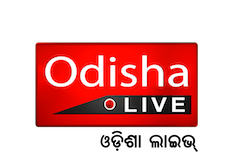Sambeet Dash
Invited by Sir Ashutosh Mukherjee, the then head of University of Calcutta, to teach “Odia and principles of Comparative language “, Pandit Nilakantha Das left for the city. That was September, 1920.

His stay in Calcutta was important for a couple of incidents which brought out the rebel in Nilakantha. It was during this stay in Calcutta he took notice of Lala Lajpat Rai’s fiery speech, calling to embrace SATYAGRAHA (Followers of Righteous path), a mode of protest against the British rule.
Also, it was during this stay, he started keeping moustache as a youthful SAUKA (fashion). But soon it turned out to be a rebellion against the prevalent culture and shocked his fellow Brahmins from Puri. When Nilakantha came visiting to the temple town, a leading Brahmin from the SOLA SASANA (16 Brahmin dominated villages surrounding Puri) Lokanath Rath bluntly told Nilakantha, “Here in Puri, we will uproot your moustache”. “Respected Rathe, don’t ever dare that. It would be tantamount to putting your hands inside a snake hole. You can be bitten big time”, Nilakantha retorted back.

The episode was equivalence of waving a red flag before an already enraged Bull. A visibly annoyed Lokanath Rath organized a meeting against the Nilakantha inside “Ani Mahari Building”, which famously housed an old Prostitute (the world’s oldest profession thrived even during those days in the temple town of Puri). But they were no match to the oratory skills of Nilakantha with a solid backing from the influential and charismatic Gopabandhu Das. It didn’t take long for the anti-Moustache protest to fizzle out.
Back in Calcutta, inspired by the speech of Lajpat Rai and motivated by Sri Gopabandhu, Nilakantha Das left his cushy job in Calcutta and came to Sambalpur in the year 1921 to join the Freedom movement. At Sambalpur, the main city of Western Odisha, he started a school on the lines of the now famous Satyavadi School. As the school flourished, many eminent and rich persons of the city started sending their kids. Soon he organized HARTAAL (protests) against the British, joined by students and lawyers of the city, singing SWARAJ BHAIYA ALBAT HOGA (Self rule will definitely occur). He also continued serving cholera and small pox- stricken people in the remote villages of Western Odisha, caring and nursing them when no one would come close to the victims.

Pandit Das started a weekly newspaper called SEVA (Service) to inform and educate the people. But like any new endeavour, money was the need of the moment. Padmalochan Mohanty, a renowned businessman of the time immediately pitched in by contributing 120 rupees towards advertising. During his stay in Sambalpur, Pandit Das taught Odia in a college for sometime before coming back to his place of birth near Puri. Meanwhile, Gandhiji visited the Satyavadi School during his trip to Odisha in 1923. Nilakantha had the gumption to disagree with the Mahatma’s modus operandi of achieving freedom through spinning the wheel or CHARKHA.
After finishing his meeting at Puri, it was Gandhi’s turn to proceed towards his next stop – Cuttack. Gandhi’s team suggested that half of them would travel by train and the rest by PADAYATRA (March on foot). But Nilakantha advised all of them to take the walk, so as to build the momentum of public enthusiasm, giving Gandhi an opportunity to better connect with the local populace. Gandhiji heeded to Nilakantha’s advice and opted to walk.

During the entire journey Gandhi’s entourage survived on boiled rice and vegetables. But, it was tough on Nilakantha, who loved his fish in his meal. Midway on the padayatra, Gandhiji came across a leper and donated his hand spun KHADAR (crude cotton cloth) to the poor man. Next day, Bapuji encountered a group of KELA (nomads) feasting on Barbecued KATASA (wild cat) who strayed into their camp.

Gandhi took the opportunity to preach about vegetarianism to the wanderers, trying to dissuade them from eating meat. Gandhi advised them: “Eat milk and ghee which are good for health. Stop committing HIMSA (violence) of killing animals”. But for the poor migrants, milk and ghee were a pipe dream, a distance luxury. KATASA MANSA (Wild cat meat) was rather the crude reality.
(This is the 10th in series of recapitulation in the writer’s own words portions of Pandit Nilakantha Das’s Biography in Odia.)
Sambeet Dash is an Odia technocrat living in Georgia US.



















